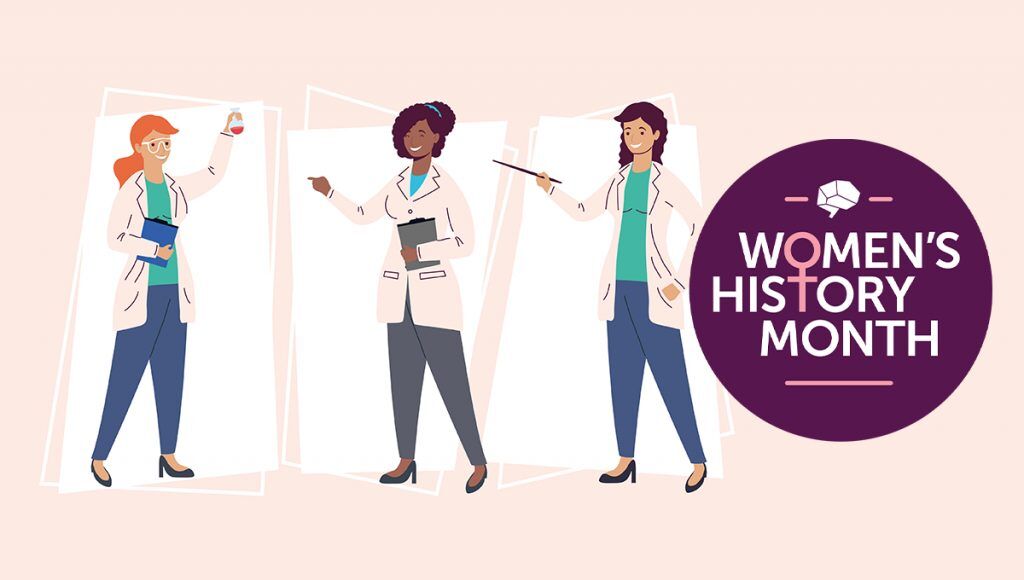For many workers in the fields of Science, Technology, Engineering, and Math (STEM), anecdotal evidence like, “there are plenty of women in my department” or “my manager is female” is common language that’s supposed to assure women in these historically male-dominated industries that equity has finally arrived.
But the reality is, young women looking to find a career path in STEM are still seeing industries filled with a vast majority of people – 73% – who don’t look like them (a number that expands to 89% for women of color). In 1970, women made up 38% of the total workforce, but only 8% of the STEM workforce.
Fast forward to the latest census report, in which women make up almost half of the workforce, but only 27% of the STEM fields. While this equates to about a three-fold growth, women still comprise less than a third of the field. Moreover, within the fields of STEM, gains are not equivalent. Social and life sciences jobs, such as sociologists and clinical psychologists, show upwards of 40 to 60% female representation, while engineering and computer science lag behind, only nearing 10%.
A leaky pipeline with unrecognized contributions
One of the most rapidly-changing STEM fields is neuroscience, thought to be in its golden age of discovery. This spark of interest in how the brain works is likely due to an increased focus on mental health and disease treatment; a push to understand human behavior in order to optimize performance; and fascinating technological breakthroughs to map our brains. Despite this excitement, representation of women in neuroscience is no better than other STEM fields. What’s more, women have made up half of the trainee population since 2014, but this representation drops to one-third as women attempt to progress in academic careers, often because of a lack-of professional incentive and belonging.
Read through any synopsis on the large advances in neuroscience and you’re likely to encounter mainly names of white males. That’s because many of the supporting or primary researchers behind the work didn’t have titles that warrant recognition, resulting in their names being hidden within the report or left off all together. So as women attempt to propel their neuroscience careers, they’re faced with a history that has been largely re-written or is unwilling to equally recognize their contributions.
In fact, public recognition for women’s contributions in neuroscience remains highly disproportionate, with women representing only 19% of the awards given in the last few years. Careers in the field are often solidified by the recognition gained from publications and speaking at seminar series or conferences, which can limit access to top department and laboratory positions.
If we were to update the history books, we’d find that women have been a part of every major hurdle cleared in neuroscience. From Maria Mikhailovna Manasseina, who first discovered that sleep is critical to our survival, to Brenda Milner who was foundational in understanding memory systems in the brain, we would see the valuable contributions women in neuroscience have made. In more recent years, Eve Marder has transformed our perception of neuronal circuits as plastic entities, and Yasmin Hurd’s work in our understanding of drug addiction, has been a driving force for developing potential treatments.
Creating a place of belonging for women in neuroscience
To complete the picture, we asked our own network of female academics about their experiences. Here are the kinds of the statements women in the field of neuroscience are still hearing:
“From your experience, what would you think women should know as they enter … how can they prepare/survive?”
“That’s a very different approach than we’re used to in this field, but go ahead, I guess you can try it.”
“Most of you aren’t going to make it, but it’s not your fault. It’s just really hard. This field isn’t for everyone.”
These statements show that microaggressions, or indirect measures subtly dressed up as sincere worry about a woman in a field she can’t handle, still occur in the field.
What’s more, women entering academia often find themselves naturally drawn to or guided to female mentors, and evidence suggests this positively impacts their likelihood for continuing on the path. Navigating microaggressions and tackling the future of women in neuroscience also places an additional burden on both mentor and protégé to overcome challenges that don’t exist for their male counterparts, which reduces their ability to work together to achieve great outputs.
To combat these challenges requires support and inclusion for female neuroscientists around us now – not just recognition after they’ve made a mark. To create an inclusive environment, organizations and universities need to make an effort to increase a woman’s sense of belonging. This happens not by reacting to underrepresentation, but by proactively focusing on growing representation.
Imagine the paradigm shift going from “how can women survive in this setting?” to “how can we help women thrive in this setting?” When people feel a sense of value, belonging, and equity in relation to their peers, they feel rewarded and motivated which helps keep them in a productive and collaborative state.
***
During Women’s History Month, we’d like to hear from you about gender equity. Our team is collecting stories from women in the workplace and we’d love to hear from you, anonymously, by filling out this form.

